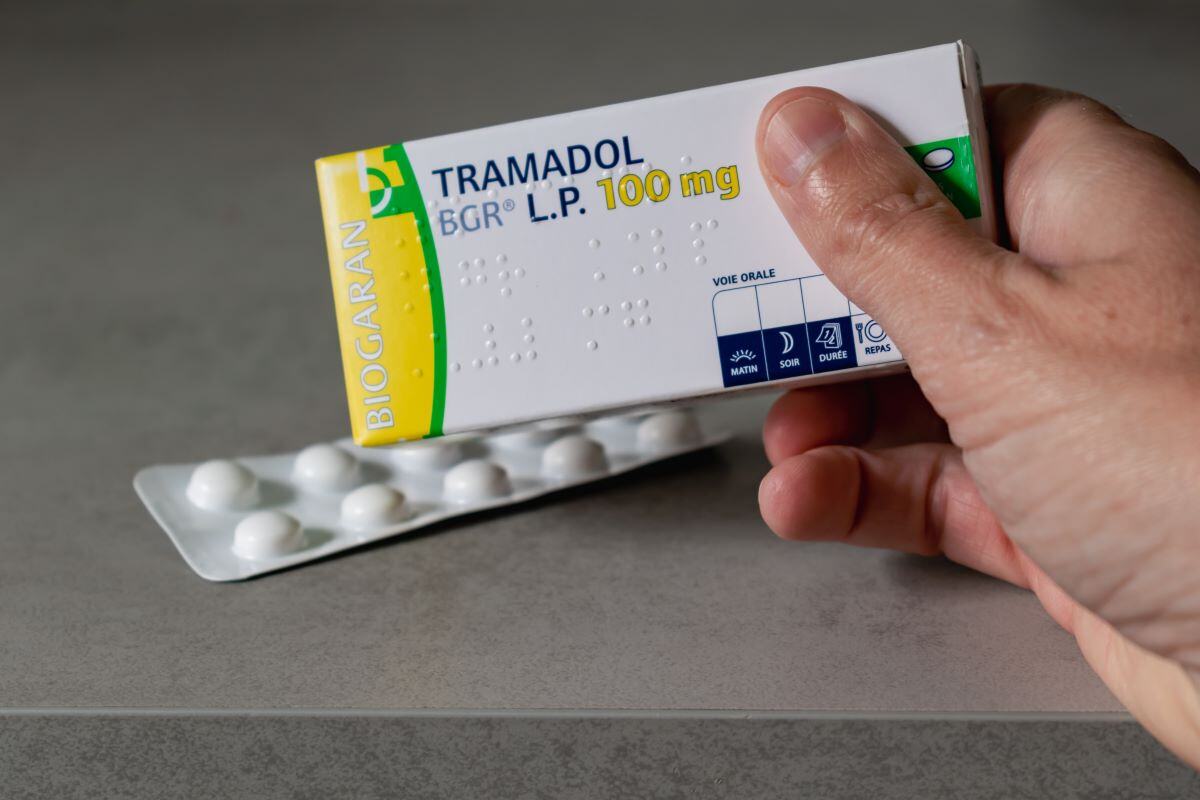Tramadol Half-Life
How Long Do The Effects of Tramadol Last?
What Are Some Factors That Affect How Long Tramadol Stays in the System?
Will Tramadol Show Up on a Drug Screen?
How Long Does Tramadol Stay In Your Body For?
How Long Does Tramadol Stay in Your Urine?
How Long Does Tramadol Stay in Your Blood?
How Long Does Tramadol Stay in Your Saliva?
How Long Does Tramadol Last in Your Hair?
How Can I Get Tramadol Out of My System?
Get Tramadol Out Of Your System For Good With Avenues Recovery
Tramadol typically stays in your system for about 31.5 hours after the last dose. In this article, Avenues Recovery - leaders in addiction rehab, explore Tramadol and how it can be detected with different tests in varying timeframes.
Tramadol Half-Life
The half-life of tramadol, which is the time it takes for the body to eliminate half of the drug, is approximately 6.3 hours. It generally takes about five half-lives for a drug to be considered fully eliminated from the system. Therefore, five tramadol half-lives would take around 31.5 hours to elapse.
Additionally, tramadol is metabolized into an active metabolite called O-desmethyl tramadol (O-DSMT), which has a longer half-life than the parent drug. This means that the drug can stay in your system for even longer than 31.5 hours.
The following factors will also play a role in how long tramadol lasts in the system:
- Age
- Liver function
- Kidney function
- Metabolism
- Overall health
How Long Do The Effects of Tramadol Last?
Tramadol is a fast-acting pain medication that usually takes effect within thirty minutes to one hour of oral administration. Tramadol typically reaches its peak concentration in the bloodstream within two hours of administration. Consequently, individuals are likely to encounter side effects such as pain relief (analgesia) and drowsiness during the initial one to two hours after taking tramadol.
Factors that influence the onset of medication include:
- Metabolism
- Other medications in the system
- Type of tramadol (immediate-release or extended-release)
As the name suggests, immediate-release formulations are designed to provide quick relief, while extended-release formulations are intended to have a longer duration of action. The effects of immediate-release formulations last for about 4 - 6 hours, while extended-release formulas provide relief or side effects for up to 24 hours. People seeking relief from severe or chronic pain would likely use an extended-release formula.
What Are Some Factors That Affect How Long Tramadol Stays in the System?
Several factors can influence how long tramadol stays in the system, including:
Metabolism: The rate at which the body metabolizes tramadol can vary from person to person. Individuals with faster metabolisms may process the drug more quickly than those with slower metabolisms.
Liver Function: Tramadol is primarily metabolized by the liver. Any liver impairment or dysfunction can affect the drug's metabolism and clearance from the body.
Age: Older individuals may metabolize drugs more slowly than younger individuals, potentially leading to a longer presence of tramadol in the system.
Kidney Function: Although the liver primarily metabolizes tramadol, the kidneys also play a role in eliminating some of its metabolites. Impaired kidney function can inhibit drug clearance.
Dosage and Frequency: The amount of tramadol taken and how often it is used can impact the duration of its presence in the system. Higher doses and more frequent use may prolong the drug's presence in the system.
Drug Interactions: Concurrent use of other medications or substances can affect tramadol metabolism. Certain drugs may inhibit or enhance the enzyme systems responsible for tramadol processing.
Genetics: Individual genetic factors can influence how enzymes in the body metabolize drugs, potentially leading to variations in drug clearance.
Body Composition: Body weight and fat percentage can influence drug distribution in the body. Tramadol's effects may differ in individuals with varying body compositions.
Hydration Level: Adequate hydration supports the elimination of drugs through urine. Insufficient hydration may slow down the excretion of tramadol and its metabolites.
Urinary pH: The pH level of urine can affect the elimination of drugs. Changes in urinary pH may impact the solubility and excretion of tramadol.
Will Tramadol Show Up on a Drug Screen?
Tramadol can be detected in a tramadol drug test, but the specific detection window can vary depending on factors such as the dose taken, individual metabolism, and the type of test being conducted. Blood tests are generally more effective in detecting recent drug use.
Tramadol is a prescription medication, and its use is typically monitored through specific drug tests. If you are taking tramadol as prescribed by a healthcare professional, it's important to inform them of all medications you are using to ensure accurate interpretation of any test results.
If you are undergoing a drug test for legal or employment reasons, you should inform the testing facility about any prescription medications you are taking. This can help avoid any misunderstandings or false positives.
How Long Does Tramadol Stay In Your Body For?
Tramadol can be detected in your urine, blood, saliva, or hair. Different tests check how long tramadol stays in your system. However, the detection time differs depending on the type of test. Below, the detection time for each specific test is detailed.

How Long Does Tramadol Stay in Your Urine?
Tramadol can be detected in your urine for about 24 - 72 hours (1 - 3 hours) from when it was last taken. Urine tests are generally very accurate and reliable.
How Long Does Tramadol Stay in Your Blood?
Tramadol can show up in a blood test for 12 - 24 hours after it was last used. However, in certain cases, such as if a very high dose was taken, the detection window may increase to 48 hours.

How Long Does Tramadol Stay in Your Saliva?
Saliva tests can usually detect Tramadol for 24 hours after it was last used and in some cases for up to 48 hours. Saliva tests are quick and non-invasive and are often used as roadside tests.
How Long Does Tramadol Last in Your Hair?
Tramadol can be detected in your hair up to 90 days after it was last used, giving it the longest detection window of all tramadol tests. The hair test also provides an exact and specific result as opposed to the positive/negative result that other tests provide.
|
How Long Does Tramadol Stay in Your System For |
|
|
Biological Sample |
Detection Time |
|
Urine |
1-3 days |
|
Blood |
Up to 24 hours |
|
Saliva |
24 - 36 hours |
|
Hair |
Up to 90 days |
How Can I Get Tramadol Out of My System?
Here are some tips to help eliminate tramadol from your body as efficiently as possible:
- Drinking plenty of water can help flush substances from your body more quickly. However, excessive water intake may not necessarily speed up the elimination of tramadol and can have risks, so it's important not to drink too much water.
- Maintaining a healthy lifestyle with regular exercise and a balanced diet can contribute to overall well-being and may indirectly support your body's natural elimination processes.
- Alcohol and certain substances can interact with tramadol and may affect its metabolism. Avoiding these substances may help your body process tramadol more efficiently.
- Always follow your healthcare provider's instructions regarding medication use. Abruptly stopping tramadol or adjusting the dosage without medical guidance can lead to withdrawal symptoms or other complications. In most cases, the body will naturally eliminate tramadol over time. The elimination half-life provides a general guideline for how long it takes for the drug to be reduced by half in the body.
Get Tramadol Out Of Your System For Good With Avenues Recovery
Understanding what tramadol is and how long tramadol stays in your system can help you start the journey to recovery. If you or a loved one suffers from tramadol abuse, reach out to us at Avenues Recovery so we can guide you on your road to recovery. Our highly trained and experienced staff have helped thousands of people break free of their addictions and they can help you too. No one deserves to suffer from addiction alone. At Avenues Recovery we provide personalized treatment plans, evidence-based therapies, and a supportive community to give you the best chance at recovery. We believe that no one is beyond help and it's never too late to take your first step towards healing. Contact Avenues today to experience premier care and support every step of your way toward a brighter, healthier, and sober future.



